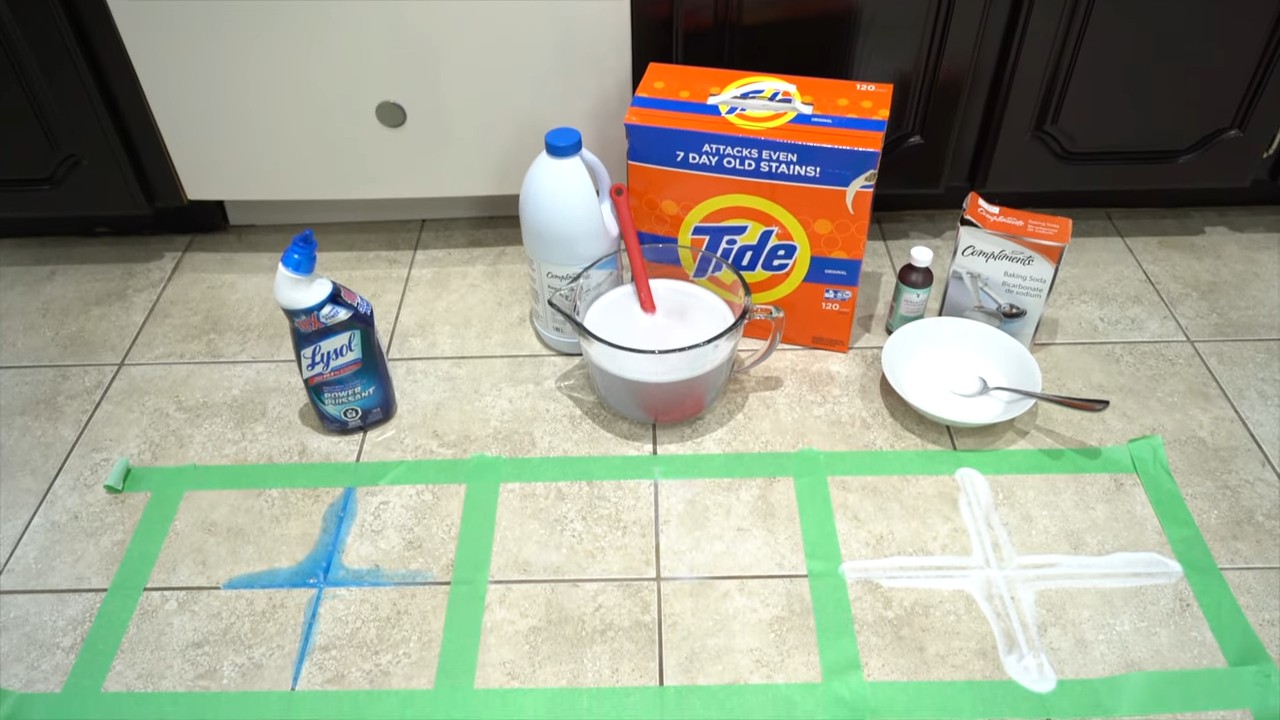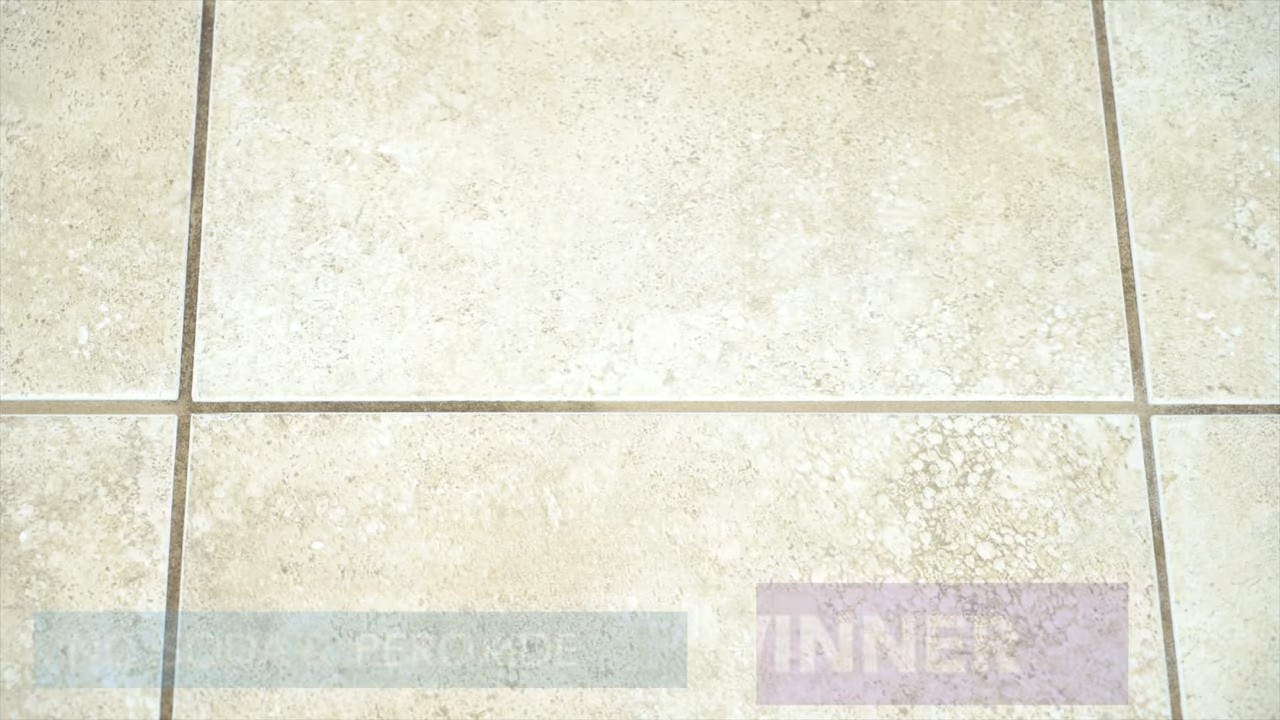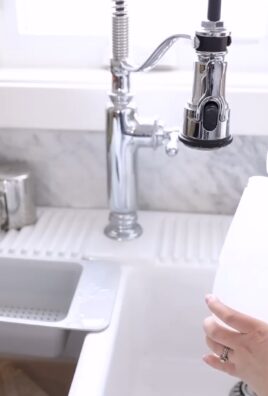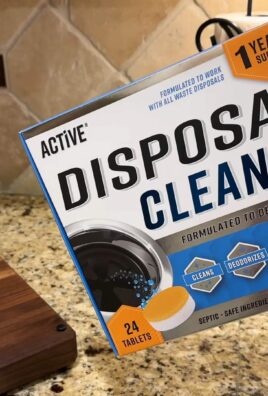Toilet cleaning grout whitening – sounds like a chore, right? But what if I told you that sparkling white grout in your bathroom is totally achievable with simple DIY tricks, and without harsh chemicals? For generations, keeping homes clean has been a cornerstone of hygiene and well-being. From ancient civilizations using natural remedies to modern-day cleaning solutions, the quest for a spotless home is timeless. But let’s be honest, nobody enjoys scrubbing grout, especially around the toilet!
That’s why I’m so excited to share these easy and effective DIY methods for toilet cleaning grout whitening. We all know that dingy, stained grout can make even the cleanest bathroom look grimy. It’s not just about aesthetics; grout can harbor bacteria and mold, impacting your family’s health. Instead of spending a fortune on expensive commercial cleaners that often contain harsh chemicals, I’ll show you how to use common household ingredients to achieve professional-level results. Get ready to transform your bathroom with these simple, budget-friendly hacks!

DIY Toilet Grout Whitening: A Sparkling Clean Guide
Hey there! Tired of staring at dingy, discolored grout around your toilet? I totally get it. It’s one of those things that can make your whole bathroom feel less clean, even if everything else is spotless. But don’t worry, you don’t need to call a professional or spend a fortune on fancy cleaning products. I’m going to show you a simple, effective, and budget-friendly way to whiten that grout and bring back the sparkle!
What You’ll Need: Your Arsenal of Clean
Before we dive in, let’s gather our supplies. This is a pretty straightforward project, so you probably have most of these items already:
* Baking Soda: This is our main cleaning agent. It’s a mild abrasive and deodorizer, perfect for tackling grout stains.
* Hydrogen Peroxide (3%): This is a gentle bleaching agent that will help lift the discoloration. Make sure it’s the standard 3% solution you find at the drugstore.
* Dish Soap (Optional): A little dish soap can help cut through grease and grime, but it’s not essential.
* An Old Toothbrush or Small Scrub Brush: This is your weapon of choice for getting into those grout lines. An old toothbrush works great!
* Spray Bottle: For applying the hydrogen peroxide.
* Gloves: Protect your hands! Cleaning products can be harsh.
* Eye Protection (Optional): Just to be extra safe, especially if you’re sensitive to cleaning products.
* Paper Towels or Rags: For wiping up messes.
* Small Bowl: For mixing our cleaning paste.
* Water: For rinsing.
* Ventilation: Open a window or turn on the bathroom fan.
Phase 1: Prepping the Battlefield (Your Toilet Area)
Before we start scrubbing, let’s get the area ready. This will make the whole process smoother and more effective.
1. Clear the Area: Remove any rugs, bath mats, or other items that might get in the way. You want to have easy access to the grout around the toilet.
2. Dry the Grout: If the grout is wet, dry it off with a towel or let it air dry. This will help the cleaning paste adhere better.
3. Ventilate: Open a window or turn on the bathroom fan to ensure good ventilation. This is especially important when working with hydrogen peroxide.
4. Protect Yourself: Put on your gloves and eye protection (if using).
Phase 2: The Baking Soda and Hydrogen Peroxide Power Paste
This is where the magic happens! We’re going to create a powerful cleaning paste that will lift those stubborn stains.
1. Mix the Paste: In your small bowl, combine baking soda and hydrogen peroxide. Start with about 1/2 cup of baking soda and slowly add hydrogen peroxide until you get a thick paste-like consistency. If you’re using dish soap, add a small squirt (about a teaspoon) to the mixture.
2. Test the Paste (Optional): Before applying the paste to all the grout, test it on a small, inconspicuous area to make sure it doesn’t damage the grout or surrounding surfaces.
3. Apply the Paste: Using your fingers or a small spatula, apply the paste generously to the grout lines around the toilet. Make sure to cover all the discolored areas.
4. Let it Sit: This is the key! Let the paste sit on the grout for at least 15-20 minutes. For really stubborn stains, you can let it sit for up to an hour. The longer it sits, the more time it has to work its magic.
Phase 3: Scrub-a-Dub-Dub!
Now it’s time to put in a little elbow grease.
1. Grab Your Brush: Take your old toothbrush or scrub brush and start scrubbing the grout lines. Use firm, circular motions to loosen the dirt and grime.
2. Focus on Stained Areas: Pay extra attention to areas that are heavily stained. You might need to scrub these areas a little more vigorously.
3. Rinse Frequently: As you scrub, rinse the brush frequently with water to remove the dirt and grime. This will help you see your progress.
4. Don’t Be Afraid to Reapply: If the paste starts to dry out or you’re not seeing the results you want, reapply the paste and continue scrubbing.
Phase 4: The Grand Finale: Rinsing and Drying
We’re almost there! Now it’s time to rinse away the paste and reveal your sparkling clean grout.
1. Rinse Thoroughly: Use a damp sponge or cloth to rinse away all the baking soda paste. Make sure to remove all traces of the paste, as it can leave a residue if left behind.
2. Dry the Area: Use a clean towel or paper towels to dry the grout and surrounding surfaces.
3. Inspect Your Work: Take a look at your grout. Is it as white as you hoped? If not, you can repeat the process or try a stronger cleaning solution (see below for alternatives).
4. Admire Your Handiwork: Step back and admire your sparkling clean grout! You did it!
Troubleshooting and Alternative Solutions
Sometimes, even with the baking soda and hydrogen peroxide paste, you might encounter stubborn stains that just won’t budge. Don’t despair! Here are a few alternative solutions you can try:
* Bleach Pen: A bleach pen is a great option for targeting specific stains. Apply the bleach to the grout lines, let it sit for a few minutes, and then rinse thoroughly. Be careful when using bleach, as it can be harsh and can damage certain surfaces. Always wear gloves and eye protection when working with bleach.
* Commercial Grout Cleaner: There are many commercial grout cleaners available on the market. Choose one that is specifically designed for grout and follow the instructions carefully.
* Steam Cleaner: A steam cleaner can be a very effective way to clean grout. The hot steam loosens the dirt and grime, making it easier to wipe away.
* Baking Soda and Vinegar: While I didn’t recommend this as the primary method, you can try a baking soda and vinegar paste. Be aware that this combination creates a fizzing reaction, so use it carefully. Apply the baking soda first, then spray with vinegar. Let it fizz for a few minutes, then scrub and rinse.
* Re-grouting: If your grout is severely damaged or stained, you might need to consider re-grouting. This is a more involved process, but it can completely transform the look of your bathroom.
Preventing Future Stains: Keeping Your Grout Sparkling
Now that you’ve got your grout looking its best, let’s talk about how to keep it that way. Prevention is key!
* Wipe Up Spills Immediately: The sooner you wipe up spills, the less likely they are to stain the grout.
* Regular Cleaning: Clean your grout regularly, even if it doesn’t look dirty. A quick wipe-down with a damp cloth and a mild cleaner can go a long way.
* Seal the Grout: Sealing the grout will help protect it from stains and moisture. You can purchase grout sealant at most hardware stores. Apply the sealant according to the manufacturer’s instructions.
* Improve Ventilation: Good ventilation will help prevent mold and mildew growth, which can stain the grout.
* Use a Squeegee: After showering, use a squeegee to remove excess water from the walls and floor. This will help prevent water from seeping into the grout.
Important Safety Tips
* Always wear gloves and eye protection when working with cleaning products.
* Ventilate the area well.
* Test cleaning solutions on a small, inconspicuous area before applying them to all the grout.
* Never mix bleach with ammonia or other cleaning products, as this can create dangerous fumes.
* Keep cleaning products out of reach of children and pets.
I hope this guide helps you achieve sparkling clean grout around your toilet! It might take a little effort, but the results are definitely worth it. Happy cleaning!

Conclusion
So, there you have it! This simple, yet incredibly effective DIY toilet cleaning grout whitening trick is a game-changer for anyone battling stubborn stains and discoloration in their bathroom. Forget spending a fortune on harsh chemical cleaners that promise the world but often fall short. This method utilizes readily available ingredients, is gentle on your grout (when used as directed), and delivers truly remarkable results.
Why is this a must-try? Because it’s not just about aesthetics; it’s about creating a healthier and more inviting bathroom environment. Clean, white grout instantly brightens the entire space, making it feel fresher and more hygienic. Plus, knowing you’ve achieved this with a homemade solution is incredibly satisfying.
Beyond the Basics: Variations and Suggestions
While the core recipe is fantastic as is, feel free to experiment with a few variations to suit your specific needs and preferences.
* Essential Oil Boost: Add a few drops of your favorite essential oil, such as tea tree, eucalyptus, or lavender, to the paste for an extra boost of freshness and antibacterial properties. Just be sure the essential oil is safe for use on grout and won’t cause discoloration.
* Lemon Juice Power: For particularly stubborn stains, consider adding a tablespoon of lemon juice to the mixture. The citric acid in lemon juice acts as a natural bleaching agent and can help to lift discoloration.
* Baking Soda Scrub: After applying the paste, use an old toothbrush or grout brush to gently scrub the grout lines. This will help to loosen any remaining dirt and grime.
* Preventative Measures: Once you’ve achieved sparkling white grout, maintain its appearance by regularly wiping down the area with a mild cleaning solution after each shower or bath. This will prevent the buildup of soap scum and mildew, making future cleaning much easier.
* Color Grout Considerations: While this method is generally safe for white or light-colored grout, exercise caution when using it on colored grout. Always test the solution on a small, inconspicuous area first to ensure it doesn’t cause any fading or discoloration. You may need to dilute the mixture or reduce the application time.
We are confident that this DIY toilet cleaning grout whitening solution will become your go-to method for achieving a sparkling clean bathroom. It’s cost-effective, environmentally friendly, and delivers impressive results.
Now, it’s your turn! We encourage you to give this DIY trick a try and see the difference it can make in your own bathroom. Don’t be afraid to experiment with the variations and find what works best for you.
Most importantly, we want to hear about your experience! Share your before-and-after photos, tips, and feedback in the comments section below. Let’s create a community of DIY enthusiasts who are passionate about achieving a clean and healthy home. Your insights could help others discover the power of this simple yet effective toilet cleaning grout whitening solution.
Frequently Asked Questions (FAQ)
Q: Is this DIY toilet cleaning grout whitening method safe for all types of grout?
A: While this method is generally safe for most types of grout, especially white or light-colored grout, it’s crucial to exercise caution when using it on colored grout. Always test the solution on a small, inconspicuous area first to ensure it doesn’t cause any fading or discoloration. Different types of grout react differently to cleaning agents. Some colored grouts are more susceptible to bleaching or discoloration than others. If you’re unsure about the type of grout you have, consult with a professional tile installer or cleaning specialist before proceeding. If you notice any adverse effects during the test, dilute the mixture or reduce the application time. For colored grout, consider using a gentler cleaning solution specifically designed for colored grout.
Q: How often can I use this DIY toilet cleaning grout whitening solution?
A: The frequency of use depends on the severity of the staining and the type of grout you have. For heavily stained grout, you may need to use it more frequently initially, perhaps once a week for a few weeks, until you achieve the desired results. However, avoid overusing the solution, as excessive cleaning can weaken the grout over time. Once the grout is clean, switch to a maintenance routine of cleaning it every few weeks or as needed. Regular cleaning will prevent the buildup of dirt and grime, making it easier to maintain the whiteness of the grout. Consider using a milder cleaning solution for routine cleaning to avoid harsh chemicals.
Q: What if the stains are extremely stubborn and don’t come off easily?
A: For extremely stubborn stains, you can try a few things. First, increase the concentration of baking soda in the paste. You can also add a tablespoon of hydrogen peroxide to the mixture for extra bleaching power. Apply the paste and let it sit for a longer period, up to an hour, before scrubbing. Use a stiff-bristled brush or grout brush to scrub the grout lines vigorously. If the stains persist, you may need to repeat the process a few times. As a last resort, consider using a commercial grout cleaner specifically designed for removing stubborn stains. However, always follow the manufacturer’s instructions carefully and test the cleaner on a small, inconspicuous area first.
Q: Can I use this solution on other surfaces in my bathroom, such as tiles or shower walls?
A: While the ingredients in this solution are generally safe for most bathroom surfaces, it’s always a good idea to test it on a small, inconspicuous area first to ensure it doesn’t cause any damage or discoloration. Avoid using the solution on delicate surfaces such as marble or natural stone, as it may etch or damage them. For tiles and shower walls, you can use a diluted version of the solution or a general-purpose bathroom cleaner. Always rinse the surfaces thoroughly with water after cleaning.
Q: How do I prevent grout from getting stained in the first place?
A: Prevention is key to keeping your grout clean and white. Here are a few tips:
* Regular Cleaning: Wipe down the grout lines after each shower or bath to prevent the buildup of soap scum and mildew.
* Ventilation: Ensure proper ventilation in your bathroom to reduce moisture levels, which can contribute to mold and mildew growth.
* Grout Sealer: Apply a grout sealer to protect the grout from stains and water damage. Reapply the sealer every year or as needed.
* Avoid Harsh Chemicals: Use mild cleaning solutions specifically designed for grout to avoid damaging the grout or causing discoloration.
* Address Leaks Promptly: Fix any leaks in your bathroom promptly to prevent water damage and mold growth.
Q: What type of brush is best for scrubbing grout?
A: A stiff-bristled brush or grout brush is best for scrubbing grout. Look for a brush with a narrow head that can easily reach into the grout lines. An old toothbrush can also be used for smaller areas or hard-to-reach spots. Avoid using abrasive brushes or scouring pads, as they can damage the grout.
Q: Is baking soda safe to use around pets and children?
A: Baking soda is generally considered safe to use around pets and children. It is non-toxic and does not pose a significant health risk. However, it’s always a good idea to keep cleaning solutions out of reach of children and pets to prevent accidental ingestion. If your pet or child ingests a large amount of baking soda, contact your veterinarian or doctor.
Q: Can I use this method on grout in other areas of my home, such as the kitchen?
A: Yes, this method can be used on grout in other areas of your home, such as the kitchen. However, be sure to test the solution on a small, inconspicuous area first to ensure it doesn’t cause any damage or discoloration. The same precautions apply as with bathroom grout.
Q: What are the benefits of using a DIY toilet cleaning grout whitening solution compared to commercial cleaners?
A: There are several benefits to using a DIY solution:
* Cost-Effective: DIY solutions are typically much cheaper than commercial cleaners.
* Environmentally Friendly: DIY solutions often use natural ingredients that are less harmful to the environment.
* Gentle on Grout: DIY solutions can be gentler on grout than harsh chemical cleaners.
* Customizable: You can customize the ingredients to suit your specific needs and preferences.
* Avoid Harsh Chemicals: You can avoid exposing yourself and your family to harsh chemicals.




Leave a Comment